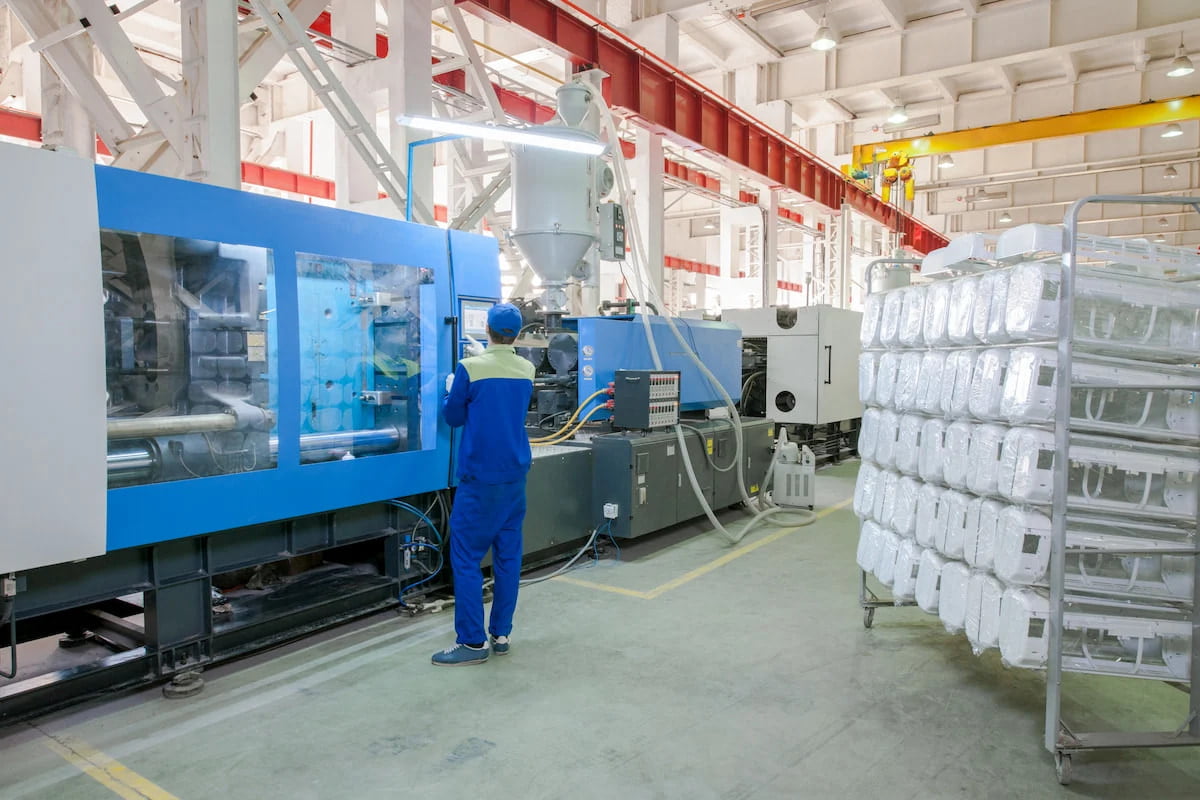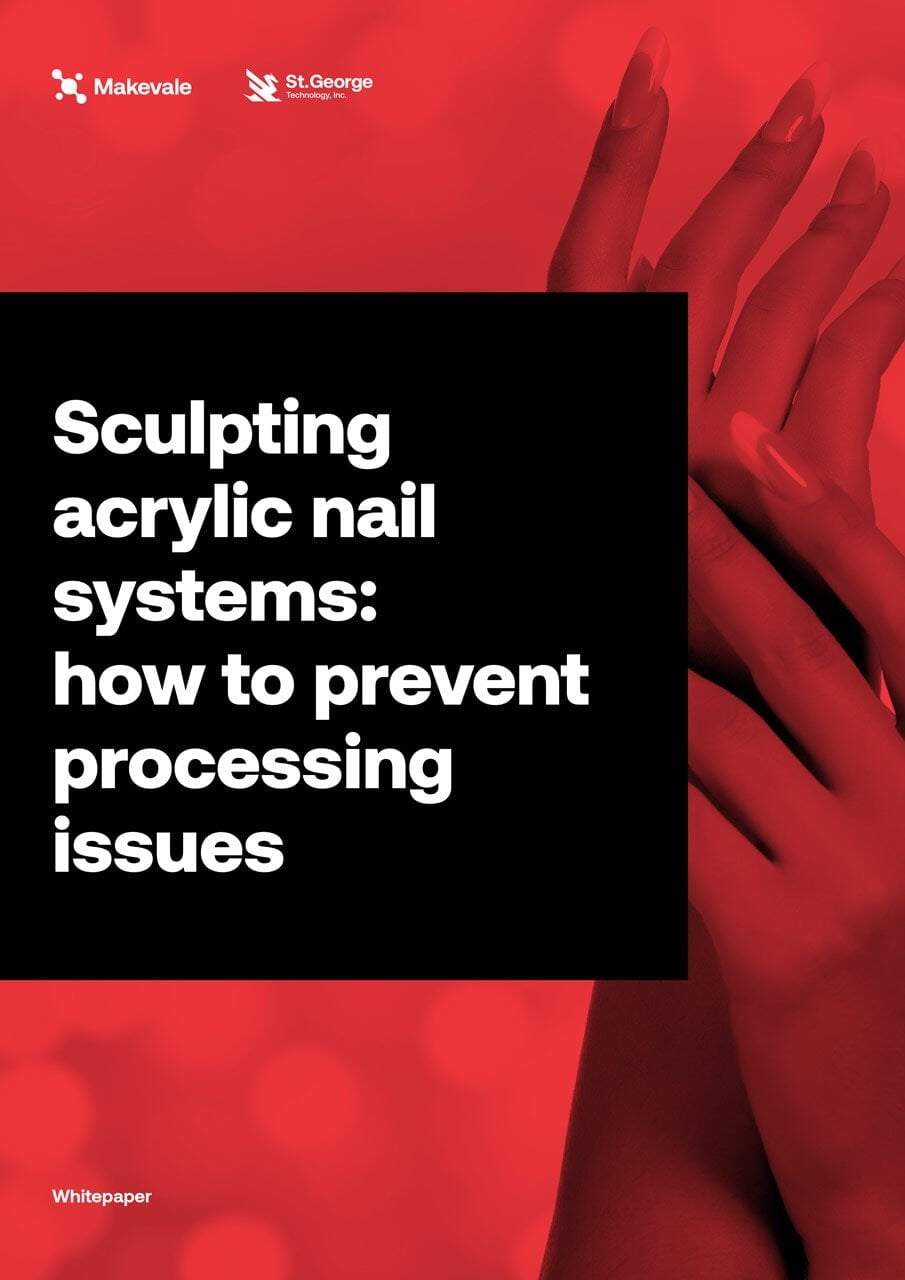
Acrylic is a popular choice for many casting and modelling applications, particularly in the production of dental prostheses and cosmetic nails. End users have the relatively simple job of mixing a monomer liquid and a polymer powder to make a dough, which once moulded and cured, forms the desired product. But the process involves a complex chemical cocktail and adverse effects are all too common. Acrylic yellowing, slow cure times and surface imperfections can result in poor product performance and presentation. When things go wrong, the chemical additives are put under the spotlight, but the problem can often lie in the base of the powder component - the poly (methyl methacrylate) (PMMA).
So how can you guarantee that PMMA isn’t creating a hidden problem in your process?
Understanding the impact of PMMA beads
PMMA beads are often overlooked as a straightforward base ingredient of casting and moulding powders, such as those used in the production of dental prostheses, clear casting resins and acrylic nails. But this is far from the case. The bead manufacturing process can have a huge impact on the characteristics of the bead and, therefore, its performance. The beads’ molecular weight, particle size and residual chemical profile are all determined by how the PMMA beads are manufactured.
PMMA bead characteristics have a direct impact on the production process and end product, including the handling characteristics, cure time, porosity and yellowing, the rate of downstream polymerisation, in casting, and the flow (self-levelling) in the case of acrylic nails.
Getting the chemical balance right
PMMA bead production, like downstream polymerisation processes, is driven by complex chemical interactions. Crosslinkers, inhibitors and peroxide-based initiators are all required in very precise formulations. Unstable inhibitor levels can lead to porosity in casting stages or unpredictable pour times. High residual peroxide, left on the surface of the beads, can lead to acrylic yellowing because of degradation compounds.
Although suspension polymerisation is an established process, the interactions of its byproducts are still largely unknown and can lead to unpredictable outcomes. However, over 40 years of PMMA production has enabled Makevale to have very tight control over the performance of these chemicals and, in turn, on the desired outcomes. In fact, modern PMMA bead production is becoming a design-led process, with PMMA bead characteristics tailored to particular applications.
Of course, it’s not just about the chemicals, the physical manufacturing process also affects the characteristics of the PMMA bead. The speed of agitation, the shape of the agitator and the size and geometry of the reaction vessel can all impact on the dimensions and molecular weight of the PMMA beads.
Creating designer beads
The interactions of the chemical and physical processes combine to produce the exact characteristics of the PMMA bead. Fine-tuning delivers clearly designed features and specific product performances and colour. This is of particular importance in applications such as cast acrylics, where yellowing can cause a stained effect or in nail powders when colour absorption, clarity and vibrance are crucial parameters. Flow rates are also important, especially in acrylic nail powder where a fine, granular profile and self-levelling is important for a smooth finish. Curing times in cast acrylics are crucial. Too much residual peroxide and curing will occur too fast, taking place before the cast has a chance to form properly. Too small and curing might not happen at all.
Acrylic yellowing and other undesired effects are prevented by understanding the underlying chemistry of the customer’s process and developing the optimal PMMA bead specification to meet this. Our chemists spend time understanding precise customer processes and the intended use of the PMMA so that the polymerisation reaction is carefully controlled, meaning the bead characteristics are created to the exact brief. This prevents additional processing before the powders reach the market, such as the addition of blue dyes to readjust colour. If you can prevent yellowing altogether, it saves money and the addition of another chemical that could affect the product profile. Through strict quality control processes, Makevale’s PMMA beads are verified to ensure they meet clients’ expectations.
Product detective work
New clients often come to us with a problem to solve. Sometimes an existing product does not match quality expectations or perhaps they’re interested in bringing a new product to market. Either way, we treat each challenge as a problem to be solved. In many cases, we can track issues to the PMMA bead and by designing new characteristics we can deliver the desired performance. Sometimes, it’s about working with the client to fine-tune their downstream polymerisation processes and in some cases, we can provide ready mixed liquids, concentrates or powders to take the pain out of the process. Overall, these changes all help to make customer processes more profitable.
Makevale has more than 40 years of experience in developing high-performance polymers across multiple industries, working with clients to create the perfect formulas to meet their manufacturing challenges. For further information on our PMMA beads and acrylic powders and liquids, contact our team for free, no-obligation advice.
